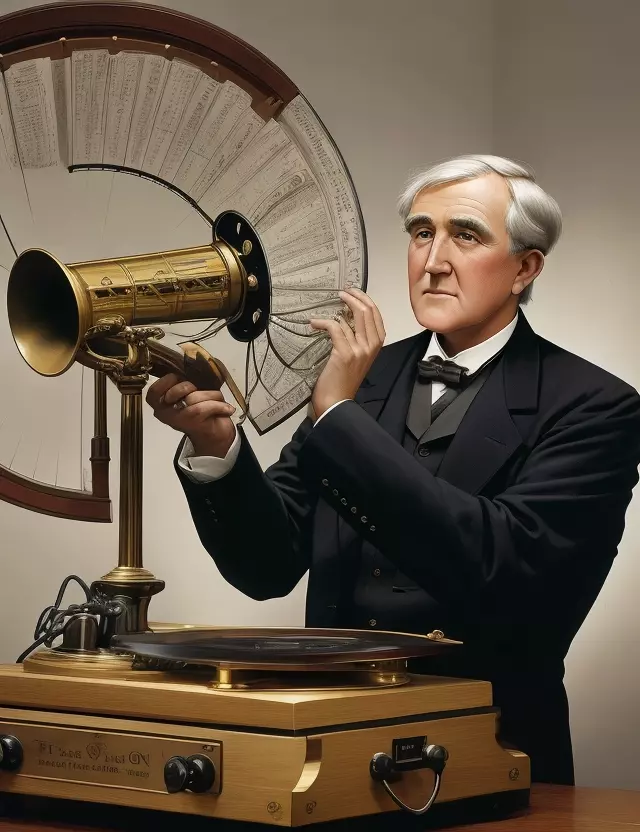Sonic Innovation: Thomas Edison Introduces the Phonograph, Revolutionizing Sound Recording
First Public Demonstration of the Phonograph (1877)

Introduction
On December 6, 1877, inventor Thomas Edison introduced the world to the phonograph, a groundbreaking device that would revolutionize the way sound is recorded and played back. This moment marked a significant leap forward in technological innovation and music history.
Phonograph Unveiling
The first public demonstration of the phonograph showcased Edison's ingenuity in capturing and reproducing sound. This invention represented a paradigm shift, opening new possibilities for the recording and enjoyment of music and spoken words.
Technological Breakthrough
Edison's phonograph was a technological marvel, employing a rotating cylinder with grooves to record and reproduce sound. This innovation laid the foundation for future developments in audio technology and became a precursor to modern recording devices.
Impact on Music History
The introduction of the phonograph had a profound impact on music history, allowing for the preservation and dissemination of musical performances. It transformed the way people experienced and interacted with recorded sound, shaping the evolution of the music industry.
Enduring Significance
Thomas Edison's phonograph demonstrated the power of human creativity and innovation. Its enduring significance is felt in the ongoing evolution of audio technology, from the early days of cylinders to the digital recording methods used in the present day.



